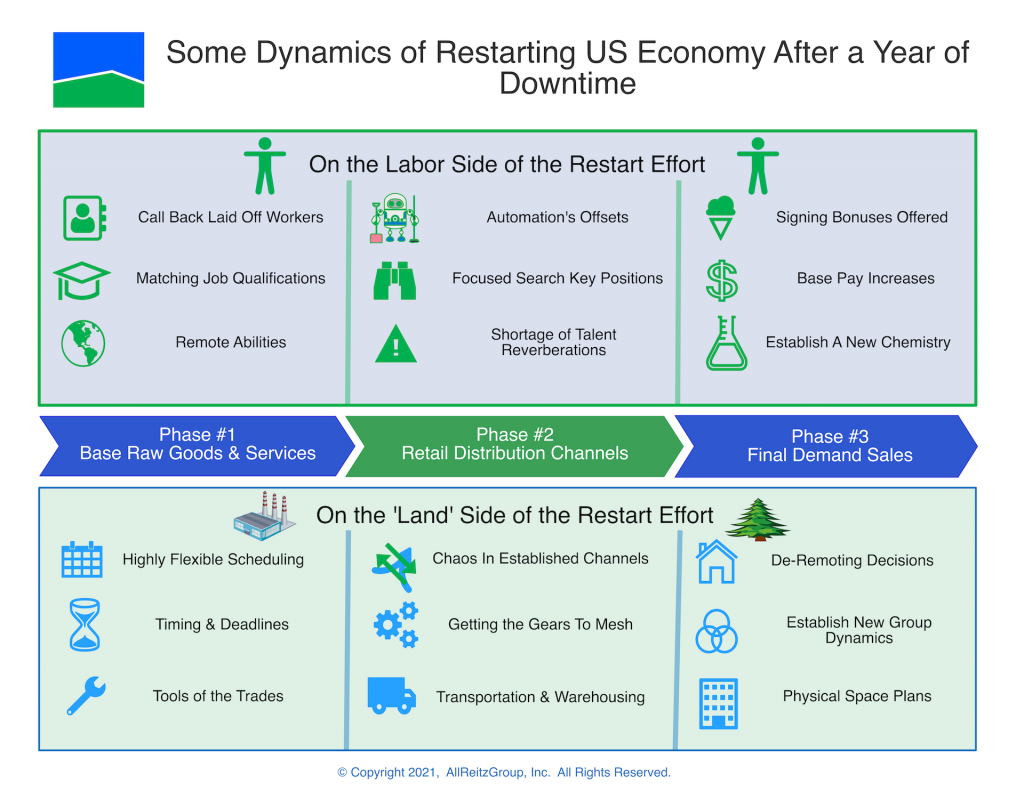A Look at Restarting the US Economy
Price functions as the great equalizer in our economy. Too much of something means there’s not enough demand, so the price falls, demand rises, and the Supply & Demand (S&D) are equalized. Likewise, if there is more demand for something than there is supply, the price rises, eliminating the excess demand and equalizing S&D. April ’21 economic data shows S&D pricing active in all phases of the economy. The April CPI (Consumer Price Index) came in at 4.2%, well above expectations. Data shows price changes within the phases of the economy are changing dramatically. Restarting the US economy involves equalizing S&D in all phases of the economy. Much of this activity appears to be more of equalizing mismatches in S&D caused by a year of ‘interesting’ economic activity.
The accompanying graphic shows the three phases of the economy, broken into the two elements of value, Land (raw materials, etc.) and Labor (including business services). In each of the six cells created are three key issues disrupting that cell. As S&D move toward the final demand sales (think retail) phase, the balancing of S&D in each sub-market causes the price of goods & services to change. All these price changes accumulate as production flows through the various phases of the economy. The net price changes needed in April to equalize S&D is the CPI.
LABOR
On the Labor side, one key issue appears in all three phases- Demand for labor exceeds supply at all levels. Complicating this imbalance further is the mismatch of talents needed versus talent available, adding more price balancing activity. In response, employers in the recently reopened final demand sales phase are giving signing bonuses and increasing base pay to attract the talent they need.
Great strides in automation reduce the impact of the labor increases through increases in productivity. In April, the productivity increases could not offset the high price changes. The De-Remoting decisions companies make (full, partial, etc.) now will require a partial reboot of workflows, systems and time to train labor in those changes. Over time, the increased productivity will slow the rise in labor expenses, but it will cost in the short term.
LAND
Land represents the raw materials, tools and intermediate goods that are the foundation of our economy. As each sub-market resolves their issues, the resulting productivity increases will help offset current pricing pressures.
In sum, I think “Getting the Gears To Mesh” from the graphic describes best what must be accomplished for smooth economic sailing. During the process price changes and uncertainty will be our companions.






No comments! Be the first commenter?